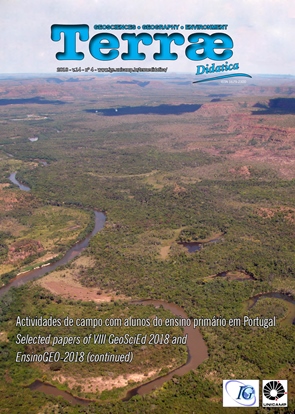Abstract
Himalayan geosystem is highly vulnerable and susceptible to various kinds of Geo-hydrological vulnerability. Anthropogenic activities are continuously disturbing the natural system and its impact on the hydrological behavior of river. The important factor causing a flood and also accelerate several hydrological hazards during monsoon periods are heavy rainfall, cloud burst, GLOF, landslides, Slope failure, deforestation, drainage congestion due to urbanization. The Geospatial technique has been used to find out the relief, slope distribution and landslide hazard zonation and secondary data is taken to carry the analysis work. Primary data from each hotspot has been collected through a questionnaire survey and a Participatory Research Approach (PRA) and Livelihood options, Institutional participation in adaptation policy design and implementation, food security and Empowerment parameters like health and education (LIFE) approach. Present research highlights that most of the slope cutting and construction of roads are parallel to course of rivers, consequently slopes and roads have become highly vulnerable to landslides. Landslides vulnerability is increasing at an alarming rate due to unplanned and uncontrolled construction and other types of tourism based infrastructural development. Alaknanda river basin is an in-route gateway to millions of pilgrimages and religious as well as nature tourism movements. Hence, encroachments of the river side’s and constructions of houses have increased the risk and vulnerability. Study also examines the possible ways to improve the living standards of the local community through ecotourism, sustainable development and disaster risk reduction techniques. This paper also provides various mitigation processes for the challenges faced in the Alaknanda river basin, Uttarakhand and attempts to formulate sustainable development strategy for the development of Alaknanda river basin.References
Bajracharya S.R., Mool P. 2009. Glaciers, Glacial Lakes and Glacial Lake Outburst Floods in the Mount Everest region, Nepal. Annals of Glaciology, 50(53):81-86.
Bandooni S.K. 2004. Land Resources Management and Development in Hill Areas. New Delhi, Research Press India.
Kumar A., Negi M.S. 2017. Assessment of land capability and suitability classification for agriculture using geospatial techniques in Rudraprayag District (Garhwal Himalaya). In: Sati V.P., Lalmalsawmzauva K.C. eds. 2017. Natural Resources Management for Sustainable Development and Rural Livelihoods. New Delhi, Today and Tomorrow’s Printers and Publishers. v. 2, p. 443-463.
Likert R. 1932. A Technique for the Measurement of Attitudes. Archives of Psychology, 140:1-55.
Ministry of Disaster Management and Mitigation Centre, 2016. Report of Disaster, Dehradun, Uttarakhand.
Pal S.K. 1986. Geomorphology of River Terraces along Alaknanda Valley, Garhwal Himalaya. Delhi, B.R. Publ. Co.
Pandey B.W.. Prasad A.S. 2016. Land Use Pattern and Hazards Risk Assessment in Kullu Valley along the Beas River in Western Himalaya. Beijing, China, Journal of Land Use and Water Management, Special Issues - IGC 2016, 16(1-2):01-18.
Pandey B.W. 2010. Hazard Ecology: Approaches and Techniques (ed) Mittal Publication, New Delhi.
Pandey B.W. 2002. Geoenvironmental Hazards in Himalaya: Assessment and Mapping. New Delhi: Mittal Publ.
Prasad A.S., Pandey B.W. 2017, Climate Change, Land Use and Land Cover Change Detection and Its Impact on Hydrological Hazards and Sustainable Developments: A case Study of Alaknanda River Basin, Uttarakhand, India. Riscurisi Catastrofe Journal, An XVI, 20:55-68.
Sati V. P. 2013. Tourism Practices and Approaches for its Development in Uttarakhand, Himalaya, India. Journal of Tourism Challenges and Trends, Innovation in Tourism, IV(1). Sati V.P. 2014. Landscape Vulnerability and Rehabilitation Issues: a Study of Hydropower Projects in the Garhwal region, Himalaya. Natural Hazards. 75(3):2265-2278. DOI: 10.1007/s11069-014)-1430-y.
Sati V.P. 2014. Towards Sustainable Livelihoods and Ecosystems in Mountain Regions, Environmental Science. Springer Intern. Publ. DOI: 10.1007/978-3-319-03533-8.
Singh S., Singh M.C. 1997. Morphometric analysis of Kanhar river basin. National Geographical Journal of India, (43), 1:31- 43.
Singh R.B., Pandey B.W., Prasad A.S. 2014. Extent and Magnitude of Flood due to Soil Erosion in Lower Brahmaputra River Basin, Assam. Annals of the National Association of the Geographers India (NAGI).
Singh P., Haritashya U.K., Kumar N., Singh Y., 2006, Hydrological Characteristics of the Gangotri Glacier, Central Himalayas. India. J. Hydrology, 327:55-67.
Varun J. 2006. Extreme Rainfall Events and Associated Natural Hazards in Alaknanda Valley, Indian Himalayan Region. Journal of Mountain Science, 3(3):228-236.
A Terrae Didatica utiliza a licença do Creative Commons (CC), preservando assim, a integridade dos artigos em ambiente de acesso aberto.

